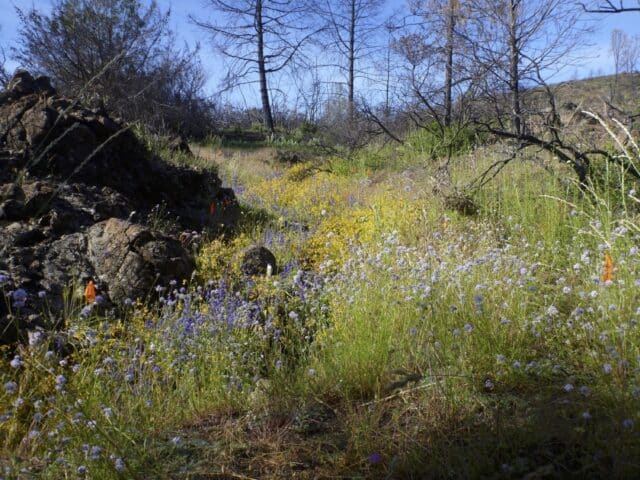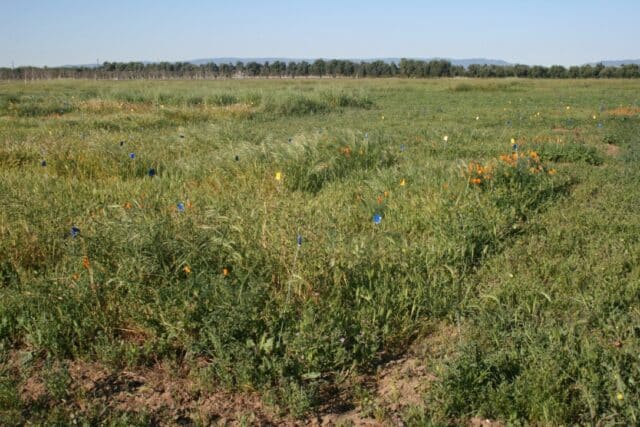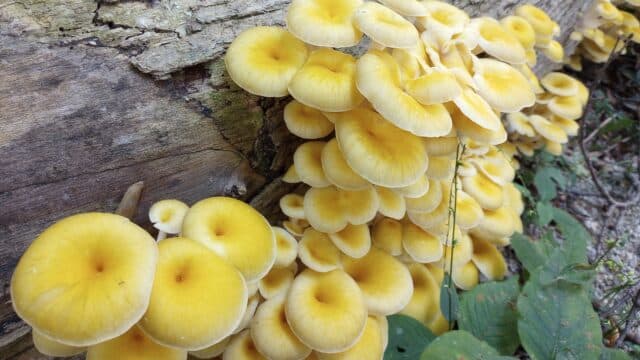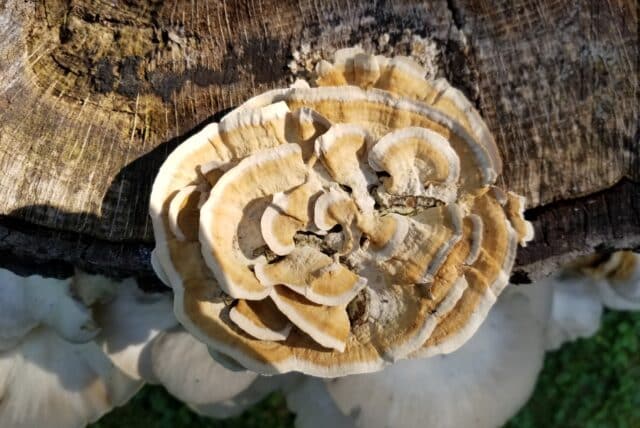
By Claudia Bashian-Victoroff
September is ending and fall is in full swing. As the leaves on the trees start to change and the wind turns chilly, we bid farewell to mushroom month. But have no fear, mushrooms will continue to appear in lawns and woods for a few more weeks! The end of mushroom month means that it is time to announce our trivia answers and to congratulate our participants!
Drum roll… and here are the answers!
Round 1: General Trivia!
- This genus of fungi is responsible for 95% of fatalities resulting from mushroom poisoning!
Answer: The genus Amanita is responsible for the vast majority of mushroom related fatalities… spooky!
BONUS: This species alone (within the genus above) is responsible for 50% of all fatal mushroom poisonings!
Answer: Amanita phalloides, also known as the Death Cap, is alone responsible for 50% of all mushroom poisonings. It is native to Europe but was introduced to the western United States and is often considered invasive due to its increasing spread across the region.
- Fungi are often estimated to be the most diverse group of life, but only a small portion of their estimated species diversity has been discovered and described by science. Approximately how many species of fungi have scientists discovered?
- 7,000
- 70,000
- 150,000
- 500,000
Answer: About 150,000 species of fungi have been described by science. To be “described by science” a species (of fungi or any other organism) needs to be described by its characteristics, given a latin name, and published in a scientific journal. Upon submission, a potential new species faces the scrutiny of the scientific community. It is the role of scientists to determine if an organism is truly a new description, or if it too closely resembles (either biologically or genetically) a previously described species.
BONUS: How many species of fungi are estimated to exist in the world? Closest guess will win the bonus point!
Answer: This is a bit of a trick question! Modern estimates of existing fungi (those are, fungi that exist but are yet to be identified, named, and described by scientists) range from 2.2 to 5.1 million (Meredith Blackwell, “THE FUNGI: 1, 2, 3 … 5.1 MILLION SPECIES?”)!
- This children’s author and illustrator published beloved picture books in the early 1900s, but her contributions to mycology were overlooked at the time likely due to her gender. Along with her many beautiful and scientifically accurate illustrations of fungi, this author contributed early observations of spore germination to the Linnean Society.
Answer: Beatrix Potter contributed many seldom acknowledged works to the world of mycology. It is well worth googling her mushroom illustrations!
BONUS: The above author also wrote scientific theories on lichens. Lichens are composite organisms that exist due to the obligate symbiosis between what two types of organisms?
Answer: lichens are “composite organisms” which exist because of symbiotic relationships between fungi and algae or cyanobacteria. Many different types of fungi and algae interact to form different types of lichen!
- Unlike plants, fungi do not rely on the sun for energy. Instead, fungi can live as decomposers, parasites, or mutualists (where both organisms benefit from the interaction). What key process do plants perform to absorb energy, which fungi do not?
Answer: Most plants absorb their energy by performing photosynthesis, in which plants use energy from the sun to make their own simple sugars. Because fungi do not perform photosynthesis they must absorb their energy from “eating” living or nonliving material.
BONUS: Shiitake mushrooms are common edible mushrooms (that we even grow here at Holden!). Shiitake’s grow on dead logs, meaning that they are…
- Decomposers
- Parasites
- Mutualists
Answer: Shiitake mushrooms are decomposers. Decomposers get their energy from breaking down dead material, helping to make soil and cycle nutrients!
Round 2: Music round!
Example: “Hey shroom don’t make it bad. Take a sad song, and make it better. Remember to let her into your heart, then you can start to make it better.” (1968) Answer: Hey Jude by The Beatles
- “She’s so lucky, she’s a slime mold, but she cry, cry, cries in her lonely heart thinking, “if there’s nothing missing in my life then why do these tears come at night?”” (2000)
Answer: Lucky by Britney Spears
- “Laughing and a-running, hey, hey. Skipping and a-jumping in the misty morning fog with our hearts a-thumping, and you, my brown-spore print, you, my brown-spore print.” (1967)
Answer: Brown eyed girl by Van Morrison
- “Hey, I just met you and this is crazy, but here’s my number, so call me, hyphae.” (2011)
Answer: Call Me Maybe by Carly Rae Jepsen
- “And feeling good was easy, when he sang the blues. You know feeling good was good enough for me; good enough for me and my Bolete” (1971)
Answer: Me and Bobby McGee by Janis Joplin

Claudia Bashian-Victoroff, MS
Research Specialist
I am a fungal ecologist focused on connections between soil fungi and tree health. My research couples field collections with modern molecular identification methods to investigate ectomycorrhizal species diversity and function. As a research specialist in Dr. David Burke’s lab at the Holden Arboretum, I support research on soil ecology and forest pathology. Currently, I focus on the role of soil fungi in urban canopy restoration in Cleveland, OH. Trees growing in urbanized environments are subject to pressures such as habitat fragmentation, exposure to heavy metals, and soil compaction. Mycorrhizal fungi can enhance plant growth, disease resistance, and drought tolerance; therefore, it is necessary that we establish a better understanding of how these fungi might improve outcomes of urban restoration efforts. Beyond this, I enjoy discussing the importance of fungal research and conservation with diverse audiences through teaching, writing, and mentorship.












